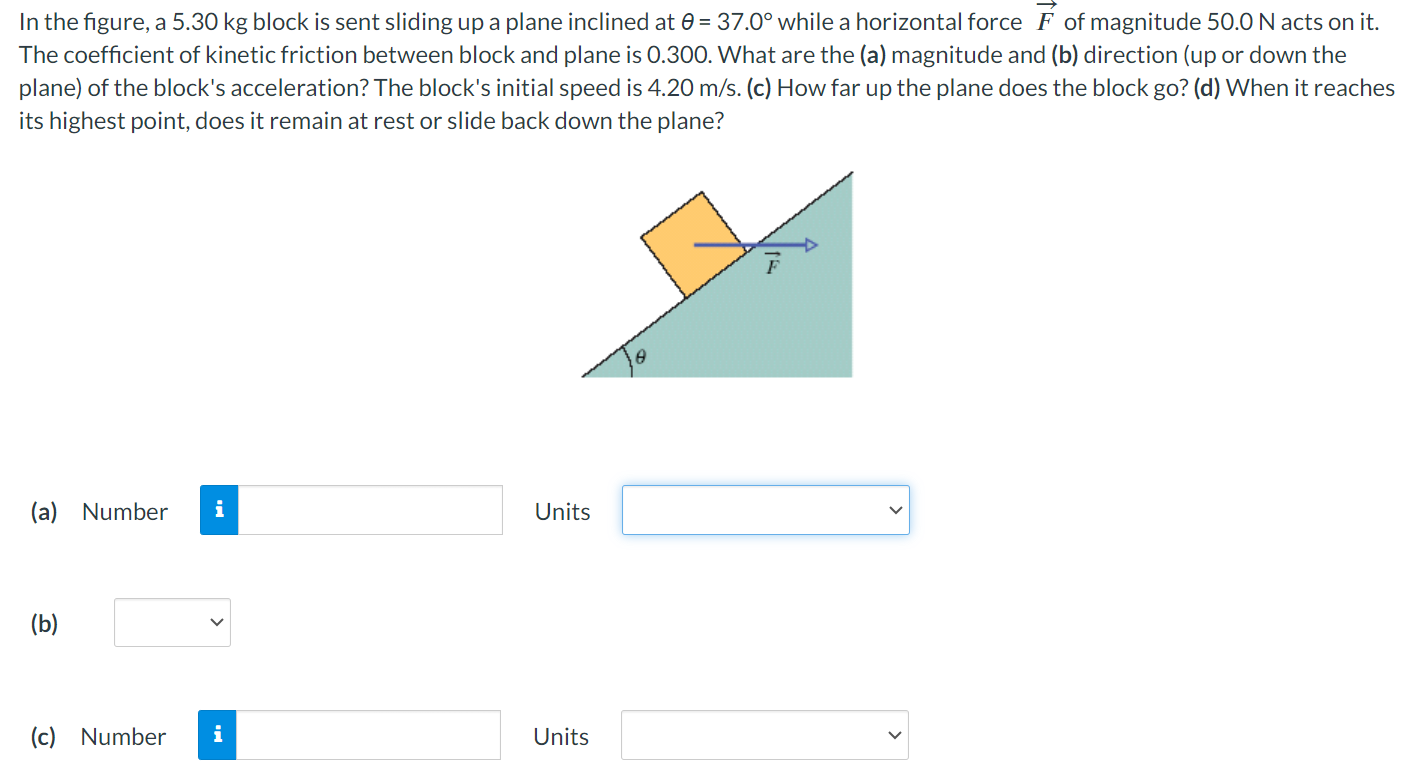In the figure, a 5.30 kg block is sent sliding up a plane inclined at θ = 37.0∘ while a horizontal force F→ of magnitude 50.0 N acts on it. The coefficient of kinetic friction between block and plane is 0.300. What are the (a) magnitude and (b) direction (up or down the plane) of the block's acceleration? The block's initial speed is 4.20 m/s. (c) How far up the plane does the block go? (d) When it reaches its highest point, does it remain at rest or slide back down the plane? (a) Number Units (b) (c) Number Units
